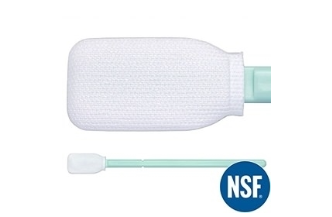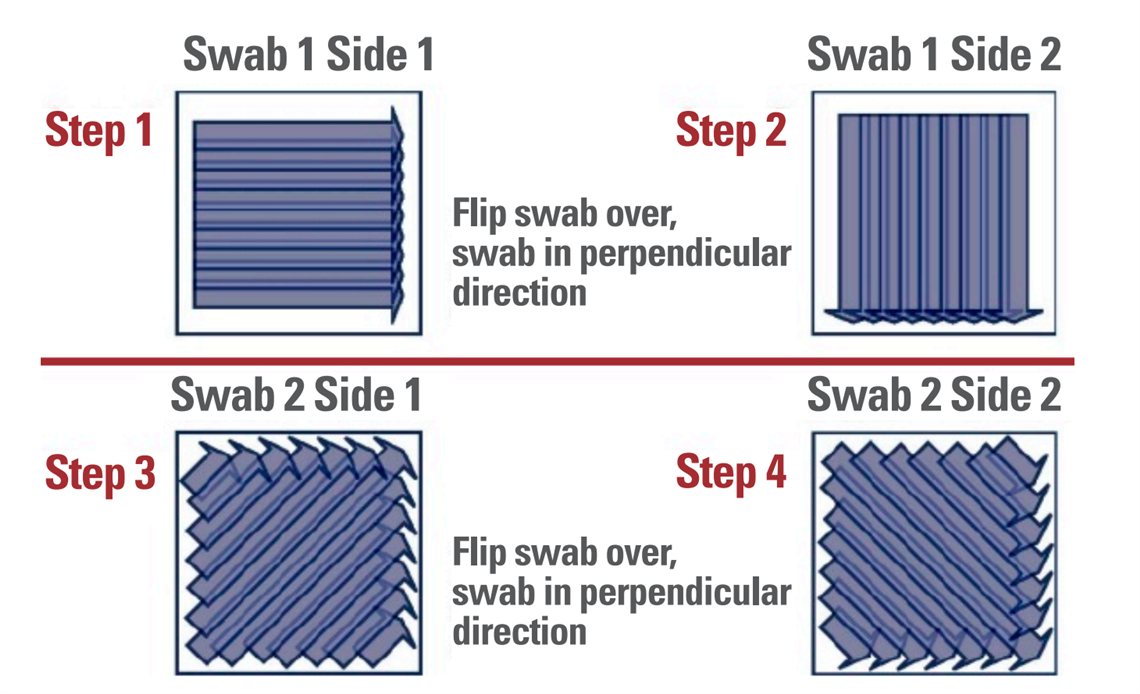Swabs for Cleaning Validation in Pharmaceutical Manufacturing
Swabbing is the preferred method to validate critical cleaning within pharmaceutical manufacturing environments. The 1993 FDA Guide to Inspections states that direct surface sampling (e.g., with swabs) is the “most desirable” technique. Potential contaminants eluted from the swab are tested down to trace levels. As a result, the selection of a quality swab and a validated swabbing method is critical to producing sensitive, accurate, and repeatable results.
The purpose of swabbing is to prove that the cleaning process served its purpose. The cleaning process must successfully remove any active pharmaceutical ingredients (API) used in previous batch runs while not leaving any residues behind from the cleaner itself.
Measurement of the Residual Acceptable Limit (RAL) can be accomplished with High Performance Liquid Chromatography (HPLC) or Total Organic Carbon (TOC) tests. HPLC-UV is a specific analysis technique that identifies and quantifies the residues found within the sample. TOC is a non-specific conductometric assay that is a catch-all for quantifying oxidizable carbon compounds within the sample.
Cleaning validation employing
These analytical methods is a complex activity requiring a careful selection of the procedure and materials involved. Establishing a capable method begins with the selection of the swab. The swab must offer:
- Minimal extractable interferences
- Ultra-low particles and fibers
- Solvent compatibility
- High recovery rates
Texwipe’s Cleaning Validation Swabs
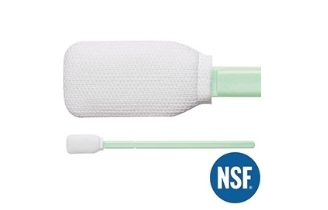
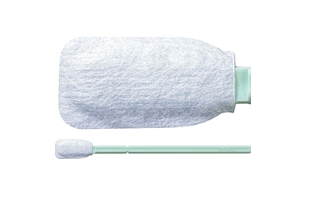
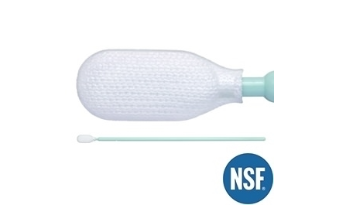
are engineered to meet this demand. As an example, the TX715 swab offers a low absorbance spectrum in the 190-235 nm range for HPLC analysis. This range is significant as it is the detection range typical of common residues. Swabs with a high UV absorbance background in this range interfere with the result by concealing residue contamination.
TOC measurements are extremely sensitive. They are reported in part per billion (ppb) (equivalent to micrograms per liter (µg/L)). Any particles from the swab head material or sample container can contribute to the TOC value. The lower the contribution and variance of these particles, the less interference from this TOC background.
Texwipe offers TOC kits with swabs and vials specifically manufactured to low TOC tolerances. Low TOC swabs within the TX3340 and TX3342 kits are certified to <50 ppb TOC while their vials are treated to ensure a <10 ppb TOC background. The swabs are pre-scored with notches to allow the head to break off easily and cleanly. The swab head can be snapped off by aligning its handle on edge, with the notch placed on the top edge of the vial and pulling down to snap the handle. This method eliminates the use of scissors, thereby eliminating an action that could contribute to more particulates (i.e., a higher TOC background).
In addition to having minimal analytical interferences, high quality cleaning validation swabs must allow for high recovery rates. Recovery rates are a function of swabbing method as well as material absorption and residue-releasing of the swab.
The swabbing pattern used is critical to ensure an accurate and reproducible collection of residues.
- The first side of the first swab is swiped horizontally ten times.
- The swab head is flipped over and the second side is swiped vertically ten times over the same surface.
- The swab is deposited in the vial.
- The first side of the second swab is swiped diagonally upwards ten times.
- The swab is flipped over and the second side is swiped diagonally downward ten times.
- The second swab head is deposited in the vial.
Texwipe’s Cleaning Validation Series swabs all use polyester fibers in their head material which offers a wide solvent compatibility. This compatibility is essential for recovering the residue off the surface and depositing it into the preselected diluent for testing.
For further information and images click here.

